Increasing qualified website traffic is one of the most important levers for getting more eyes on your pages, growing revenue, and building long-term success—especially when it comes to ranking highly in the search engine results pages (SERPs).
For context, a well-known Sistrix analysis found that the first organic result attracts roughly 28.5% of clicks on a “classic” SERP, with the second and third results around 15.7% and 11% respectively. Real-world CTRs vary based on things like featured snippets, maps, video carousels, and shopping results—so use these figures as directional, not absolute.
And yes, the last position on page one rarely gets much love—often only a few percent of searchers click there—so moving up even a couple of spots can be meaningful.
Meanwhile, there’s a lot of hoopla online about how to get more traffic—some of it right, some of it outdated. Tactics that once worked need refining in 2025.
Thankfully, you can still attract qualified visitors by applying modern, people-first ranking strategies—the kind Google’s recent core updates reward.
The trick to increasing your traffic is knowing when to apply specific techniques, how to implement them properly, and why they work in the first place.
1. Building Domain Authority
Domain Authority (DA) is a third-party metric that estimates how authoritative your site looks from the perspective of search engines. It’s typically scored from 0 to 100; higher scores correlate with a greater likelihood of strong rankings and, in turn, more traffic.
DA was popularized by Moz. Similar concepts exist in other tools, like Ahrefs’ Domain Rating and Semrush’s Authority Score. They’re all proprietary estimates—not Google metrics—useful for competitive comparison and trend-tracking, not for measuring success on their own.

To be clear, PageRank (an internal Google signal) and tool-based DA are different concepts. DA reflects a tool’s model of your site’s perceived authority; PageRank is one of many signals inside Google’s core ranking systems. Treat DA as a comparative KPI—not a goal in itself.
Also remember: DA checkers rely on their own crawlers and link indexes, which are smaller than Google’s. It’s normal to see sites with “low DA” outranking others in Google.
Other important notes about DA:
- DA doesn’t reflect Google manual actions. A domain can retain a high DA even if it’s been hit with a manual action in Google Search Console.
- Google uses many signals to rank pages. Industry estimates often cite “hundreds” of factors; no single third-party score captures them all.
- DA changes slowly. Significant improvements usually follow sustained improvements in content quality and links—not one-off tweaks.
- DA is on a logarithmic-like 100-point scale. Gains are easier in the middle than at the top end (e.g., moving from 50?60 is usually easier than 70?80).
- Use DA as a comparative input: gauge difficulty, prioritize targets, and benchmark against competitors. Don’t use it as your primary success metric.
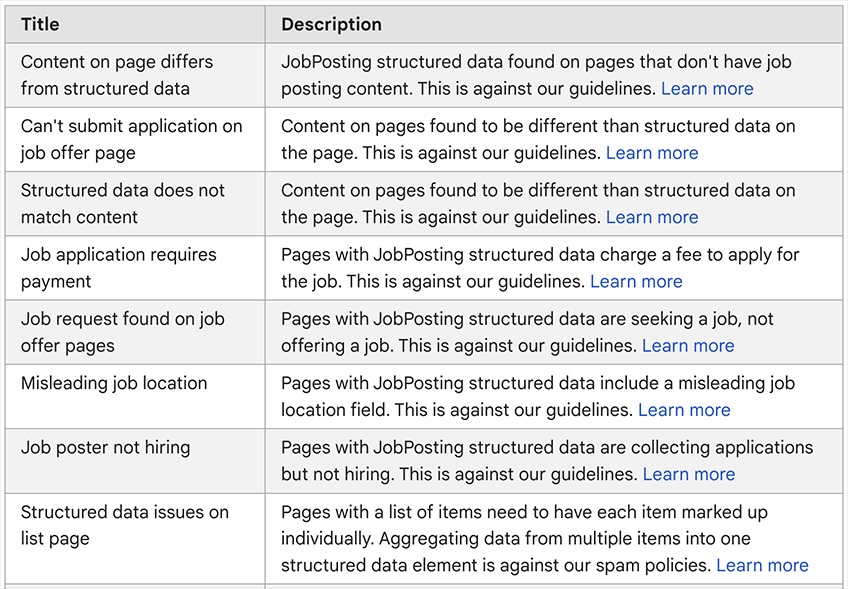
Improving DA is about acting intelligently. Know what affects it—and what doesn’t—before you pull levers.
On-page SEO: Ongoing on-page optimization is foundational for rankings and traffic. Tighten titles and H1s, match intent early in the intro, structure content with clear subheads, add helpful visuals, use descriptive alt text, and avoid keyword stuffing. Consistently publishing original, comprehensive content is still the most underrated growth driver.
Off-page SEO: In practice, this mostly means earning high-quality links and mentions. Aim for relevance and credibility over raw volume. Digital PR, original research, expert commentary, and standout tools/resources tend to earn the best links.
About “toxic” backlinks: Google ignores most spammy links. Disavow files are typically only needed if you have (or expect) a manual action for unnatural links or you previously engaged in link schemes. Routine disavowing for random spam isn’t necessary and can be counterproductive.
Site responsiveness: With mobile-first indexing and a majority of searches happening on phones, a responsive, fast site is non-negotiable. Test across devices, fix layout shifts, and streamline navigation for touch.
Waiting it out: Earning authority takes time. Improvements in content, UX, and links may take months to compound into measurable visibility gains across tools.
Determining the cost: Because authority stems from multiple inputs (content, PR, product, UX, and links), budgets vary widely. As a planning heuristic, allocate a meaningful slice of your SEO budget to initiatives that earn mentions and links—original research, data hubs, PRable content, and partnerships—over a 6–12 month horizon.
2. Creating Top-Tier Content
High-quality content should be a staple for every site—ecommerce, publishers, SaaS, agencies, and affiliate blogs alike.
But “quality” isn’t just prose. In 2025, quality means content that aligns with people-first guidelines, demonstrates experience and expertise, and actually solves the searcher’s problem better than alternatives.
2.1 What is high-quality content?
High-quality content addresses three things:
- Relevance to the audience and the specific query
- Engagement—clear language, strong structure, and useful visuals
- Usefulness—it fully satisfies the original search intent, with steps, examples, data, and next actions

“Content” isn’t only text. It includes video, tools/templates, calculators, images, podcasts, and interactive demos. Pick the formats your audience prefers, then test and iterate.
As for what to produce, start with audience problems and jobs-to-be-done. Map the SERP, identify intent, and deliver something more complete, more current, or more practical than what exists.
2.2 The value of high-quality content
Great content fuels growth by:
- Improving rankings: People-first, original content that matches intent tends to win.
- Building brand: Teaching well and sharing real experience earns trust, links, and return visits.
- Increasing conversions: Clear guidance, comparisons, and proof make it easier for visitors to take the next step.
- Boosting retention: Helpful resources keep customers successful—and coming back.
2.3 How to create timeless content
Evergreen content that you refresh on a cadence is a durable traffic engine.
Address the needs of your audience
To understand what your visitors need, ask:
- What outcome are they trying to achieve?
- What obstacles slow them down?
- Where do they already hang out online (search, social, forums)?
Use this to build research-backed personas, uncover true intent, and craft content that answers questions directly, with next steps and tools.
Leverage your expertise
Depth and firsthand experience win. Common approaches include:
- Writing from your own expertise and testing things yourself
- Partnering with credible subject-matter experts who can contribute insights and quotes
- Interviewing niche experts and turning their experience into step-by-step guides
Follow E-E-A-T guidelines and make experience and trust explicit with author bios, source citations, and clear disclosure when content is sponsored or affiliate-supported. For more, see our SEO for blogs guide.
Apply the right formats
Once you choose topics, choose the best format for the job:
- Text—Guides, how-tos, templates, emails, comparisons, case studies
- Video—YouTube how-tos, shorts, webinars, product walk-throughs
- Audio—Podcasts, narrated articles, interviews
- Hybrid/interactive—Tools, calculators, checklists, visual explainers
Use competitor analysis to spot gaps—but then aim to ship something distinctly better, more practical, or more visual than what’s already ranking.
3. Becoming a Social Media Butterfly
Most people use social platforms daily, and social conversations increasingly influence buying decisions. Used well, social can amplify your brand and send qualified visitors to your site.
If you’re strategic about it, social becomes a durable traffic channel—not just a place to post links.
3.1 What is social media marketing?
Social media marketing uses platforms like Facebook, Instagram, TikTok, LinkedIn, X, and Pinterest to promote your products and content. Sometimes you repurpose site content; other times you create native posts or short-form video that fits the platform.
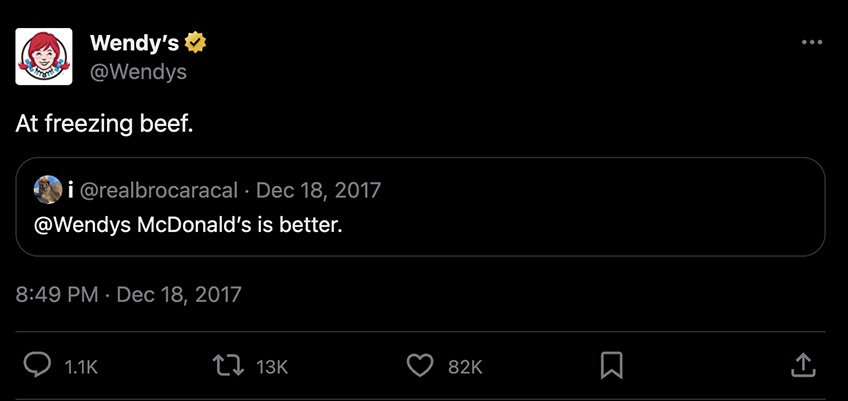
It’s cost-effective, builds awareness, and lets you engage with your audience in a conversational style—like a public help desk with personality.
3.2 How to generate traffic with social media
Here are reliable ways to turn social activity into site visits.
Create a killer profile (figuratively speaking)
Profiles are first impressions. Fill out every field, keep contact info and links current, and use on-brand visuals. Prefer vector logos (SVG) and high-resolution covers that also work on mobile crops.
Interact with your audience
Engagement takes time, so be resourceful: reshare customer posts, reply to FAQs with short videos, and pin helpful threads. Don’t feed trolls.
Showcase authenticity
Borrow ideas, not personas. Stay true to your brand voice while experimenting with polls, quizzes, AMAs, and lightweight interactive content that invites participation.
4. Working on Your Technical SEO
Technical SEO improves how search engines discover, understand, and index your website. Get the foundations right early, and everything else performs better.
Core tasks include creating and submitting your XML sitemap in Google Search Console (GSC), maintaining a correct robots.txt, and using structured data where appropriate.
4.1 Why does technical SEO matter?
If your site is hard to crawl or slow to load, rankings suffer. Treat technical SEO as the foundation that lets your content compete on merit.
You don’t need perfection to rank—but removing friction (crawl errors, slow pages, messy navigation) makes it easier for search engines to index and evaluate your pages.
4.2 Is technical SEO too technical?
Not necessarily. You can fix many issues with no-code tools and CMS settings. For tougher problems, basic familiarity with hosting, caching, HTML/CSS, and your CMS theme/plugins will help—especially on WordPress.
4.3. How to optimize your website for technical SEO
Prioritize the following checklist:
- HTTPS security—Serve everything over HTTPS to protect user data and avoid browser warnings.
- Core Web Vitals—Focus on Largest Contentful Paint (LCP ? 2.5s), Interaction to Next Paint (INP < 200ms), and Cumulative Layout Shift (CLS ? 0.1) for fast, stable pages.
- Responsiveness—Design mobile-first layouts with readable fonts, tappable controls, and minimal pop-ups.
- Crawl errors—Audit for broken links, redirect chains, stray 404s, and server errors. Clean internal links and simplify redirect logic.
- Site architecture—Use clear URL structures, intuitive navigation, breadcrumbs, and purposeful internal linking to distribute authority.
- Robots.txt—Block only what should be hidden from crawling (e.g., admin pages). Don’t block resources critical to rendering. Remember: blocking a URL from crawling doesn’t always prevent it from being indexed if other signals exist.
- XML sitemap—Submit a clean sitemap in GSC. Include only canonical, indexable URLs.
- Schema markup—Add structured data where relevant (e.g., products, FAQs, how-tos). It helps search engines understand your content and can enable rich results (eligibility, not a guarantee).
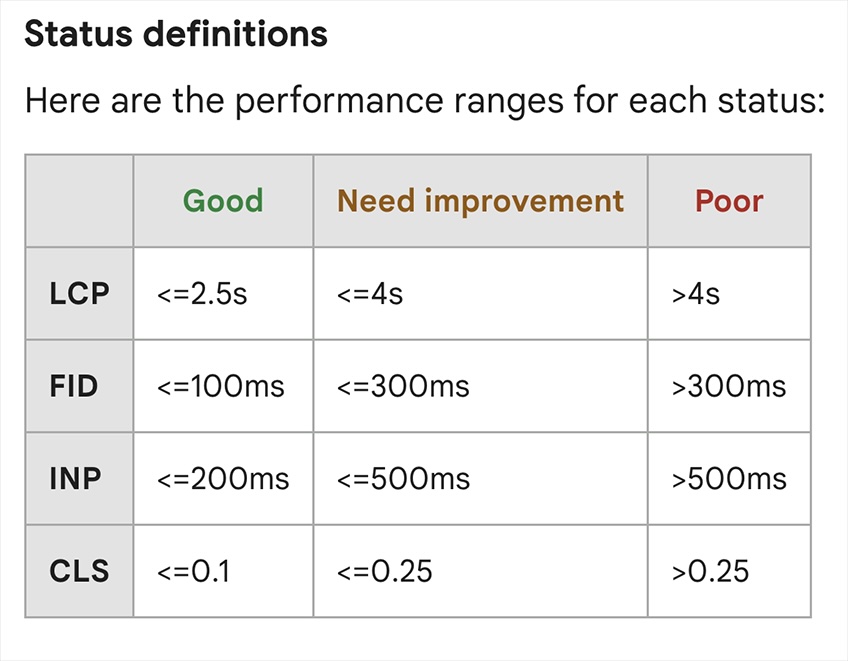
For a deeper dive, see our beginner’s guide to technical SEO.
5. Reaching Out to Influencers
Beyond great content, partnering with credible creators can open a fresh stream of qualified traffic. Influencers have sway with their audiences; when they vouch for you, discovery compounds.
Influencer outreach can help by:
- Introducing your brand to net-new audiences with relevant interests
- Securing objective reviews and demos (have your product launch-ready to avoid backfires)
- Co-creating content (your byline or theirs) that includes natural, useful links
Let’s break it down.
5.1 What is influencer marketing?
Influencer marketing is a performance-driven partnership with digital creators (YouTubers, TikTokers, streamers, newsletter authors, etc.) to promote your products or content. Deals can be direct or via affiliate networks like Awin.

Affiliates can use tracked links, reviews, and sponsored placements. If you go direct, set clear deliverables and timelines—and always require proper disclosures for ads and sponsorships.
5.2 How to perform influencer outreach campaigns
You can start today—just follow these principles.
Discover the right influencers
Use platform search and social listening to find creators with audience-fit and realistic rates. Often, a handful of aligned micro-influencers beat one mega deal on ROI and authenticity.

Know your audience
Outreach works only if your customers recognize—and trust—the creator. Validate audience overlap and sentiment before you pitch. Some businesses won’t benefit enough from influencer spend; that’s okay.
Onboard your influencers
Share your positioning, product access, brand assets, and messaging guardrails. Then give creators freedom to communicate in their own voice—authenticity is what makes the partnership effective.
5.3 How influencer marketing helps you increase traffic
The aim is more revenue via more qualified visits. Choose creators your audience relates to, and let them give honest takes. Authentic reviews outperform scripted ads every time.
In the best cases, a meaningful slice of a creator’s audience will check you out and convert. Over time, you can even become an influencer in your niche and compound the effect.
6. Using Paid Advertising
Paid ads can deliver targeted traffic fast. In practice, returns depend on your creative, targeting, landing pages, and how competitive your keywords or audiences are.
Expect bids to fluctuate. Some keywords won’t convert profitably. Treat paid as a testing lab and a growth accelerant—while you build durable organic traffic in parallel.
6.1 Organic vs. paid traffic
Paid traffic is bought; organic traffic is earned through SEO, brand, and content. Most businesses benefit from a mixed model: use paid to learn and fill gaps, while compounding organic growth for long-term efficiency.
6.2 How to pick the right paid traffic approach
Choose channels based on your audience and budget. If your customers live on a specific platform, start there.
Pay-per-click (PPC)
With PPC, you pay only when someone clicks. Variants include search, display, shopping, and video ads. Pay-per-impression (PPI) charges by views, and pay-per-play (PPP) refers to audio ads—less common but useful in some niches.
PPC placements include:
- Google Ads—Search, Display, and YouTube
- Social ads—Facebook/Meta, Instagram, LinkedIn, Microsoft Ads, Pinterest, TikTok
- Native ads—Sponsored placements that blend with a site’s editorial style
- Display ads—Banner placements in predefined areas (top, sidebar, in-content)
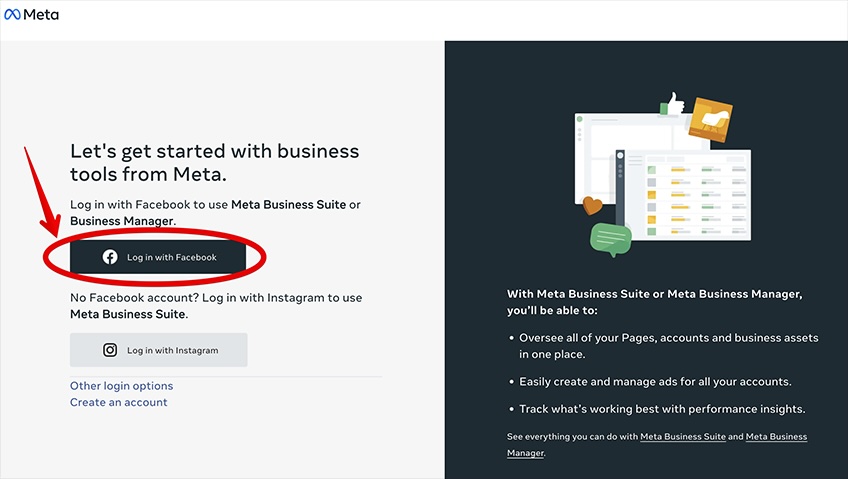
Site banners
Larger, more prominent banner buys outside your articles can build awareness. Use them with frequency caps and clear, benefit-forward creative.
Sponsored posts
Sponsored articles on reputable publications can expand reach and diversify traffic—especially with recurring placements (e.g., weekly or biweekly slots).
6.3 Pros and cons of paid advertising
Like any channel, paid has trade-offs. When it’s working, it accelerates learning and growth; when it’s not, it burns budget.
The pros include:
- Detailed analytics: See where clicks and conversions come from so you can iterate.
- Speed: Launch today, learn tomorrow.
- Targeting: Reach specific audiences by intent, demographics, interests, or remarketing lists.
And the cons:
- Traffic quality varies: More clicks don’t guarantee more customers.
- Conversion volatility: If landing pages are weak, results will fluctuate (or stall). Fix the site experience before scaling spend.
7. Working on Your Local SEO
Local SEO means optimizing your website and your Google Business Profile (GBP) to appear for nearby searches. This complements traditional SEO and is essential if you serve customers in specific areas.
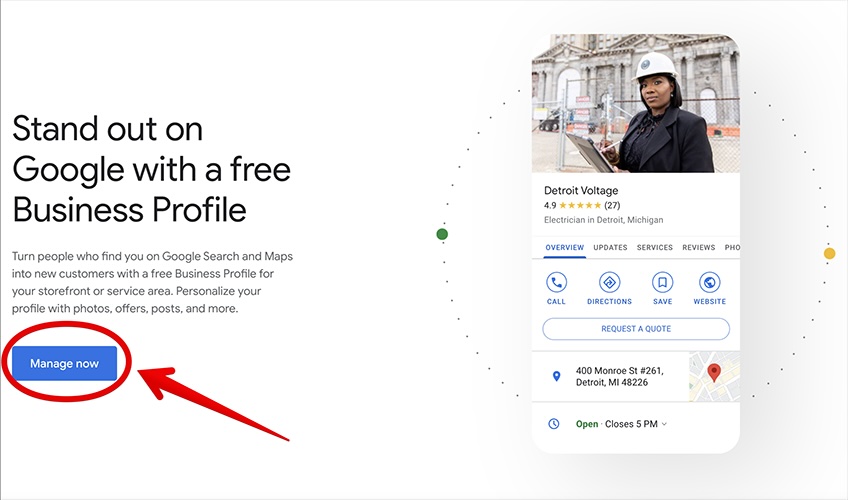
Local results trigger in two common ways:
- When a query includes a local modifier (e.g., “beer pub near me,” “top plumbing services in Hilton Head Island”)
- When device location is on, Google often returns nearby businesses by default

7.1 Should you optimize for local SEO?
If you serve customers in a defined area (storefront or service-area business), you should target local keywords and optimize your GBP. Service-area businesses can create a profile and hide their address while specifying the areas they serve.
7.2 Local SEO pros and cons
Pros:
- High intent—Local searches often happen close to purchase and convert well, especially on mobile.
- Visibility moat—Strong profiles, reviews, and local content help you stand out in map packs and localized SERPs.
- Many competitors underinvest—Consistent optimization can yield outsized gains in many markets.
Cons:
- Patience required—Ranking improvements in map packs and organic take time.
- Ongoing effort—Profiles, photos, hours, services, and reviews need regular attention.
- Algo changes—Local ranking factors evolve; cutting corners risks volatility.

7.3 How to set up a winning local SEO strategy
Local success typically hinges on two components: Google Business Profile and organic search.
Google Business Profile (GBP)
Both storefronts and service-area businesses qualify. Complete and optimize your profile: choose accurate categories, add services and attributes, upload quality photos, set messaging, keep hours current (including holidays), and post updates. Encourage honest reviews and respond to them promptly.
Also ensure your NAP (name, address, phone) is consistent across your website and major directories.
Organic search
Publish locally relevant content (service pages per city/area where appropriate), add embedded maps on key pages, include real photos of locations, and mark up pages with LocalBusiness schema when applicable. Build local links via partnerships, sponsorships, and local PR.
More Resources for Increasing Traffic
Before you invest in paid ads, make sure your site can convert the traffic you’re paying for. If visitors bounce quickly or can’t accomplish tasks, Google’s systems are less likely to reward your pages over time.
Quality content, fast pages, clear navigation, and strong product-market fit all work together to earn and keep organic traffic.
If you’re unsure where to start, our guide on creating a website in nine simple steps can help.
